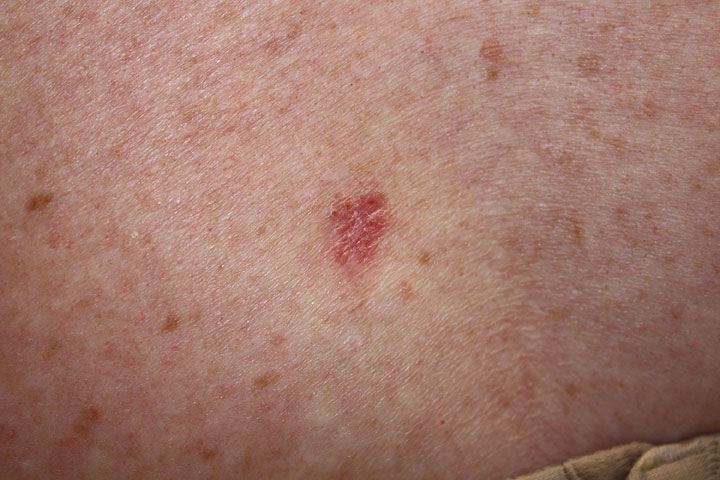Basal cell carcinoma is the most common type of skin cancer in America, with more than 3 million cases diagnosed each year. The majority of the time basal cell carcinoma is a localized problem and doesn’t spread around the body like other types of skin cancer can. Basal cell carcinoma stays as a basal cell and cannot become a melanoma or a squamous cell.
What does a basal cell carcinoma look like?
While it is strongly associated with sun exposure, one in five basal cells can occur in areas that have not had any sun exposure such as in the armpit, the groin, the ear canal or in the hair. Most present as a non-healing wound; they can be a sore that bleeds, seems to heal up, and then breaks down again. Sometimes basal cell cancers can just look like a red patch that is slowly growing over months and years.
If you have a suspicious area, a dermatologist can take a look at it. If they suspect basal cell carcinoma, a skin biopsy will be performed which will help confirm the diagnosis.
How is basal cell carcinoma treated?
Basal cell carcinoma can be treated in different ways depending on the type of carcinoma it is. If the tumor is going deeper into the skin, it may need to be excised or cut out. The tumor is removed and stitches put in place to close the wound.
More aggressive types of basal cell cancers may need a specialized procedure called Mohs surgery—the tumor is removed and the edges are checked before the wound is stitched up to make sure the cancer is completely removed. Lesions that may not be amenable to surgery can also be treated with radiation therapy. Sometimes oral medications can be used for very large problematic tumors.
Studies show that about half of the people who have had a basal cell carcinoma in the past will have another one within the next two years, so it is important to continue to get regular skin examinations. You can schedule same day and next day appointments by calling 651-209-1600 or on our website.




